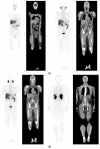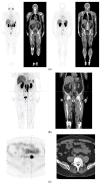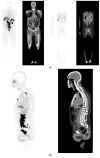PSMA PET-CT in the Diagnosis and Staging of Prostate Cancer
- PMID: 36359439
- PMCID: PMC9689635
- DOI: 10.3390/diagnostics12112594
PSMA PET-CT in the Diagnosis and Staging of Prostate Cancer
Abstract
Prostate cancer is the most common cancer and the second leading cause of cancer death in men. The imaging assessment and treatment of prostate cancer has vastly improved over the past decade. The introduction of PSMA PET-CT has improved the detection of loco-regional and metastatic disease. PSMA PET-CT also has a role in the primary diagnosis and staging, in detecting biochemical recurrence after curative treatment and in metastasis-directed therapy. In this paper we review the role of PSMA PET-CT in prostate cancer.
Keywords: PSMA PET; imaging; prostate cancer.
Conflict of interest statement
The authors declare no conflict of interest.
Figures










References
-
- Royal Australian College of General Practitioners. National Preventive and Community Medicine Committee . Guidelines for Preventive Activities in General Practice. 9th ed. RACGP; East Melbourne, Australia: 2016. - PubMed
Publication types
LinkOut - more resources
Full Text Sources
Miscellaneous

